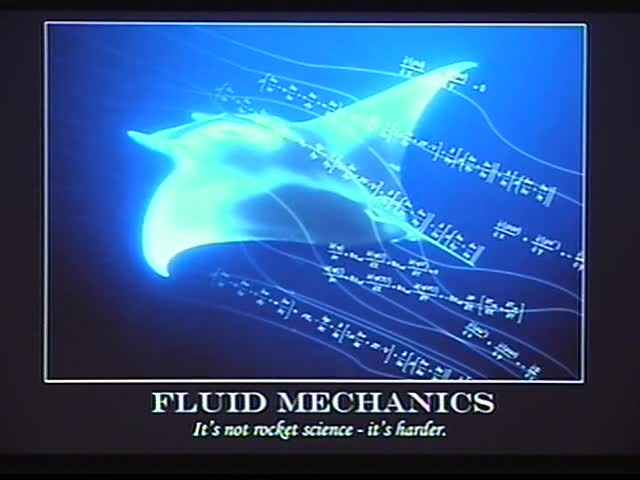Winged aquatic locomotion for high energetic efficiency through vortex control
Presenter
June 5, 2010
Keywords:
- Quantum hydrodynamics
MSC:
- 76Y05
Abstract
Keywords: hydrodynamics, lift-based propulsion, leading edge tubercles, dolphin, whale, manta, vorticity control
Abstract: Optimization of energy by large aquatic animals (e.g., dolphins, whales, manta) requires adaptations that control hydrodynamic flow to reduce drag, and improve thrust production and efficiency. Although streamlining of the body and appendages minimizes drag, highly derived aquatic animals utilize mechanisms of propulsion and control based on lift generation, which maximizes thrust production and minimizing drag. Oscillations of the wing-like fins and flukes, which are hydrofoils, generate thrust throughout the stroke cycle and maintain a propulsive efficiency over 80%. This high efficiency is dependent on spanwise and chordwise bending and management of swimming kinematics to control vorticity. Control of vorticity to improve locomotor performance for maneuverability is enhanced by modification to the leading edge of control surfaces. The humpback whale (Megaptera novaeangliae) flippers are unique because of the presence of large tubercles along the leading edge, which gives this surface a scalloped appearance. The tubercles function to produce vortical flows over the surface of the flipper and control lift characteristics at high angles of attack, where stall would occur. The potential benefits from mimicking these biological innovations as applied to engineered systems operating in fluids are high speeds, vorticity control, reduced detection, energy economy, and enhanced maneuverability.
